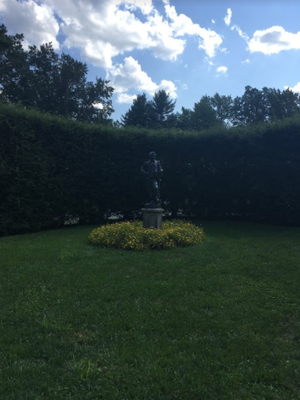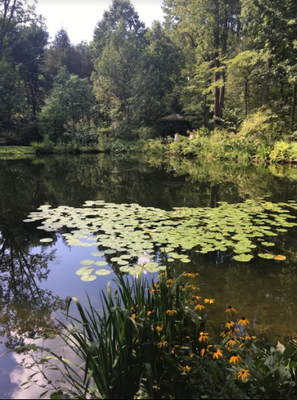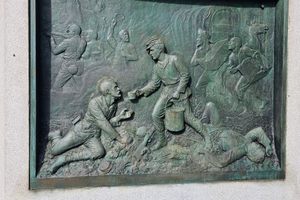About
Located among some of the greatest gardens in Delaware and Pennsylvania, , Mount Cuba's acreage was bought by the Copeland family, who added a Colonial-Revival-style house, with formal gardens surrounding the house on land that was once farmland. The elegant house was furnished with American antiques.
Mt. Cuba's area of focus is on plants of the Piedmont region, which is a hilly area between New Jersey and Alabama and sandwiched between the Appalachian Mountains and the Atlantic Coastal plain. But the people running Mount Cuba realized that by also choosing plants from Northeastern America, they could have a more diverse selection of plants.
Mount Cuba Center owns 1,083 acres, of which 20 acres have been converted to naturalistic gardens. However, there are also some formal gardens, including an alee of trees with a giant bronze sculpture of a seedpod, and a grassy lawn with plants placed around it in borders. An 18th-century drinking trough has been converted to a fountain. Many lead cherubs and sculptures decorate the formal gardens. The former swimming pool, in the shape of a Maltese cross now functions as a decorative pool. In spring, bulbs such as tulips enliven the area around the pool. There is also a lilac alee, which blooms in May.
The naturalistic gardens include a fern trail, planted with many species of the plant, and shaded by tall trees. The dogwood path just cannot be missed in spring. Also, there is a 5,000 square foot trial garden, in which they see how different varieties of native plants like hydrangeas, coneflowers, and lilies will react to the conditions at Mount Cuba. The meadow garden occupies a large bit of space where the plants grow waist-high. But the real delight of the gardens is the 1-acre lake. Pitcher plants, ferns, native orchids, cardinal flowers, joe-pye weed, lotuses and water lilies all grow around or in the delightful lake.


















































